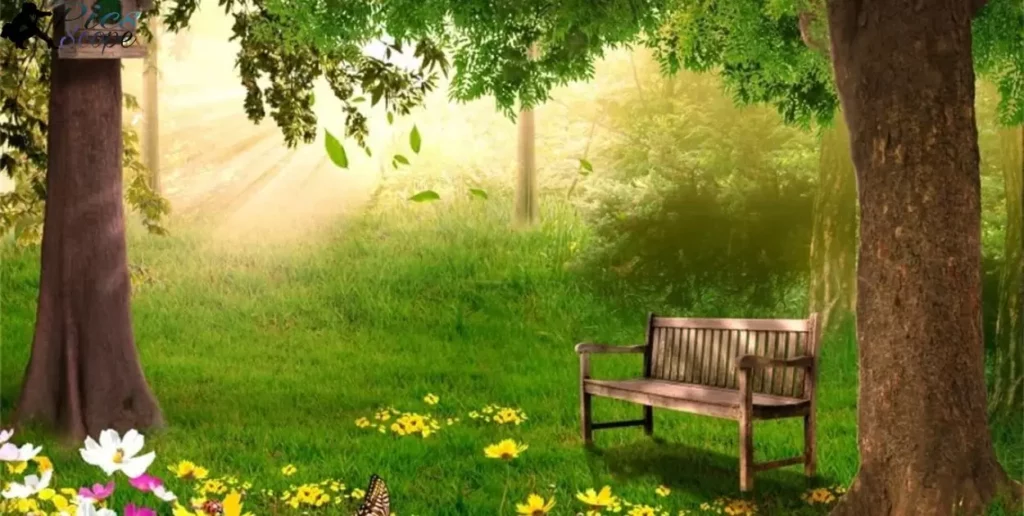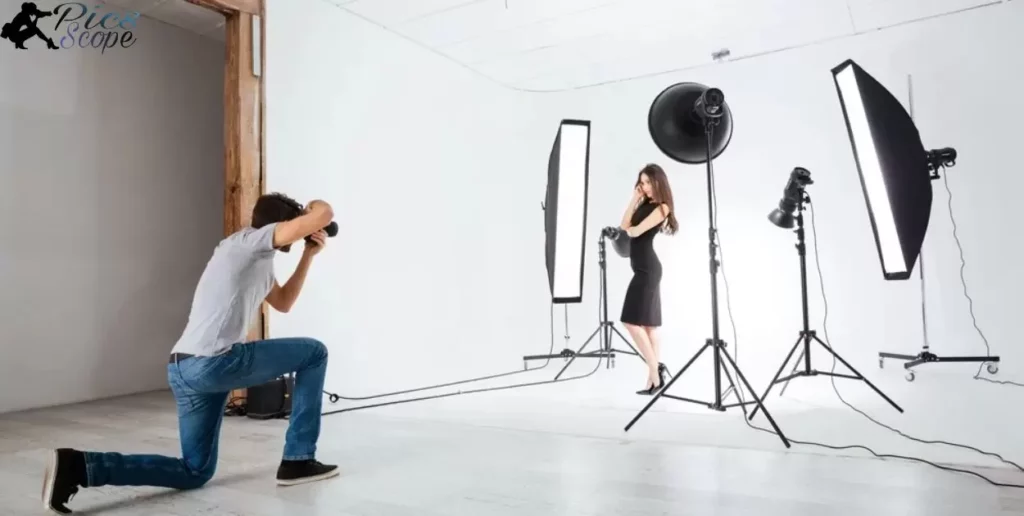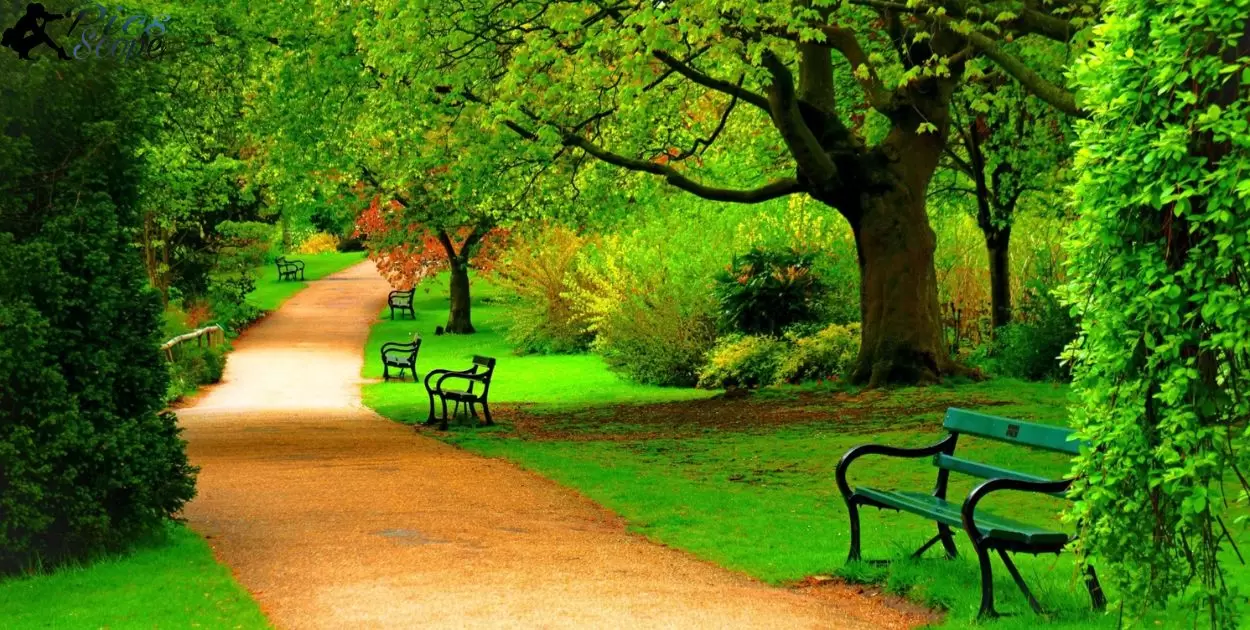In photography, a backdrop refers to the background against which a subject is photographed. It is a key element that enhances the overall composition, providing context and setting for the image. Backdrops can be simple or elaborate, chosen to complement and highlight the subject of the photograph.
Discover the artistry behind captivating photographs with this exploration of “What Is A Backdrop In Photography?” A backdrop serves as the visual canvas, setting the stage for stunning images. Dive into the world of photography and learn how choosing the right backdrop can transform your shots—making each frame a masterpiece waiting to be captured. Elevate your photography game now!
In photography, a backdrop is the background used to enhance the visual appeal of a subject. It provides context, sets the mood, and adds depth to the composition. Photographers choose backdrops carefully to complement and emphasize the main subject in their shots.
Simplified Background Photography
Simplified Background Photography is an accessible approach to capturing images with uncomplicated backgrounds. This technique involves using plain and uncluttered settings, allowing the main subject to stand out prominently. By eliminating distractions in the background, photographers can create visually striking and focused images.
In Simplified Background Photography, the emphasis is on simplicity and clarity. This method is particularly useful for portraits, product photography, and other situations where a clean and straightforward backdrop enhances the overall impact of the photograph, making it easy for viewers to connect with the main subject.
Importance of Backdrops in Photography
- Enhanced Focus on Subject: Backdrops play a crucial role in photography by providing a clean and unobtrusive background. This allows the viewer to concentrate on the main subject without distractions, ensuring a visually compelling and focused image.
- Mood and Atmosphere: Thoughtfully chosen backdrops contribute to the overall mood and atmosphere of a photograph. Whether it’s a serene landscape, an urban setting, or a simple solid color, the backdrop sets the tone for the image and enhances its emotional impact.
- Professionalism: Using suitable backdrops adds a professional touch to photographs, making them suitable for various purposes such as portraits, product shots, and formal events. A well-selected backdrop can elevate the perceived quality and professionalism of the entire image.
- Creative Expression: Backdrops offer photographers a canvas for creative expression. From vibrant patterns to subtle textures, photographers can experiment with different backdrops to add artistic flair and uniqueness to their work, showcasing their individual style.
- Consistency and Branding: For businesses and branding purposes, consistent use of specific backdrops helps create a cohesive look across a series of photographs. This uniformity strengthens brand identity and recognition, making it an essential aspect of commercial photography.
Choosing the Right Backdrop for Your Photo Shoot
Selecting the ideal backdrop is crucial for a successful photo shoot. Begin by considering the theme and purpose of your photos. Vibrant and textured backdrops work well for lively portraits, while neutral backgrounds can enhance product shots.
Pay attention to lighting conditions in your chosen location. A well-lit backdrop can highlight your subject and bring clarity to the image. Remember, the right backdrop not only complements your subject but also adds depth and interest to your photographs. Experiment with different options to find the perfect backdrop that enhances your overall vision.
Benefits of having photography backdrops in your equipment
Photography backdrops enhance your photos by providing a clean, professional background. They create a focused setting, allowing your subject to stand out without distractions. Using backdrops also adds versatility to your work, enabling you to easily change the scene and mood of your photos.
Having photography backdrops is cost-effective. Instead of searching for suitable locations, you can create diverse settings in the comfort of your studio. This not only saves time but also ensures consistency in your portfolio, making it a valuable investment for photographers of all levels.
DIY Backdrops for Photography
Creating your own photography backdrops is a fun and cost-effective way to enhance your pictures. Choose vibrant fabrics or textured materials to add depth and personality to your backgrounds. Experiment with various colors and patterns to match different themes and create eye-catching photos.
To start, find a sturdy support for your backdrop, such as a clothes rack or PVC pipes. Attach your chosen fabric using clips or adhesive, ensuring it hangs smoothly. Customizing your backdrops allows you to unleash your creativity and achieve unique results for your photography projects.
Professional Backdrops vs. Natural Settings
Photographers often face a choice between professional backdrops and natural settings. Professional backdrops provide a controlled environment with predictable lighting and minimal distractions. On the other hand, natural settings offer authenticity, capturing subjects in their everyday surroundings with the beauty of nature enhancing the photos.
Choosing between the two depends on the desired mood and purpose of the photoshoot. Professional backdrops suit formal portraits and product photography, ensuring a clean and polished look. Natural settings, however, excel in creating a candid and organic feel, ideal for lifestyle shots and capturing genuine moments.
What Is A Backdrop In Photography Pdf

A backdrop in photography is a background that sets the scene for a photo. It enhances the subject and adds context to the image. In photography PDFs, you can find various backdrop ideas and tips on choosing the right one for your photoshoot.
These PDFs guide photographers on creating appealing backdrops, from solid colors to textured surfaces. They provide insights on using backdrops to convey moods, highlight subjects, and improve overall composition.
Backdrop Materials and Textures
In photography, capturing backdrop materials and textures adds depth to your images. Choose vibrant fabrics or textured surfaces to create visually interesting backgrounds. Experimenting with different materials enhances the overall appeal of your photos, making them stand out.
Selecting the right backdrop materials allows you to convey a specific mood or theme in your photography business. It’s a rustic texture for a vintage feel or a sleek surface for a modern look; thoughtful choices in materials contribute significantly to the success of your photography.
Backdrop Lighting Techniques
Backdrop lighting is crucial in photography for creating a captivating and well-lit background. Photographers employ various techniques to illuminate the backdrop, enhancing the overall composition of the image.
One common method involves placing lights behind the subject to create a subtle glow, separating the subject from the background. Another effective technique is using colored lights to add depth and atmosphere, transforming a plain backdrop into a dynamic and visually appealing element in the photograph.
Common Mistakes to Avoid with Backdrops
Choosing the right backdrop is crucial in photography. One common mistake is neglecting the impact of lighting on the backdrop. Ensure proper lighting to avoid shadows and enhance the overall image quality.
Another mistake is using distracting or overly busy backdrops. Opt for simple and complementary backgrounds that don’t compete with the main subject. By avoiding these common mistakes, you can elevate the quality of your backdrop photography and capture more visually appealing images.
Creative Uses of Backdrops in Photography
Photographers employ backdrops creatively to enhance their photos. These versatile backgrounds provide a blank canvas, allowing subjects to stand out vividly. From simple solid colors to elaborate scenes, backdrops add depth and visual interest, transforming ordinary shots into captivating images.
In portrait photography, backdrops help convey different moods or themes. Whether it’s a professional headshot against a classic backdrop or a whimsical family portrait with a vibrant setting, the creative use of backdrops enables photographers to customize their shots, making each picture unique and visually compelling.
What Kind Of Photography Backdrops Exist?
Photography backdrops come in various types to enhance your pictures. First, seamless paper backdrops provide a clean and professional look, available in a range of colors. Fabric backdrops offer versatility, with options like muslin or canvas for texture and depth.
Vinyl backdrops are durable and easy to clean, making them suitable for various settings. Another option is using textured backdrops like wood or brick, adding character to your photos. Understanding these choices helps photographers create visually appealing backgrounds for their subjects.
How to Set Up a Backdrop for Different Photography Genres

Setting up a backdrop for photography is easy. Choose a backdrop that suits your genre, like solid colors for portraits or scenic backdrops for nature shots. Hang it securely behind your subject, ensuring it’s wrinkle-free for professional-looking photos.
For portrait photography, consider using a neutral backdrop to highlight your subject. If you’re into product photography, opt for a clean and simple backdrop to make your items stand out. Remember, a well-chosen backdrop enhances your photos and adds depth to your work.
Tips for Maintaining and Cleaning Backdrops
To keep your backdrops looking fresh, regularly vacuum or shake them outdoors. This removes dust and prevents it from settling into the fabric. Spot-clean any stains promptly using a mild detergent and a soft cloth.
For vinyl backdrops, use a damp cloth to wipe away smudges and marks. Avoid harsh chemicals to prevent damage. Lastly, store your backdrops rolled up to prevent creases, and consider steaming before use to remove any wrinkles. Following these tips will ensure your backdrops stay clean and in top condition for your next photo session.
Using Backdrops for Portrait Photography
Backdrop is a crucial element in portrait photography. Photographers use backdrops to create a distinct and appealing background for their subjects. By choosing the right backdrop, photographers can enhance the overall aesthetics of the portrait, adding depth and character to the image.
The versatility of backdrops allows photographers to experiment with different colors, patterns, and textures. Whether in a studio or an outdoor setting, a well-chosen backdrop not only complements the subject but also helps convey the desired mood or theme in the photograph.
Incorporating Backdrops in Studio Photography
In studio photography, adding backdrops enhances the overall look of your images. Choose backdrops that complement your subject and set the desired mood for the photo. Experiment with various colors and textures to create visually appealing and dynamic shots.
Backdrops provide a versatile canvas for photographers to showcase their creativity. They allow you to control the background, eliminating distractions and focusing attention on your subject. Incorporating backdrops into your studio photography not only adds depth to your images but also provides a professional touch to your work.
Best Backdrop Color For Photography
Choosing the right backdrop color is crucial for stunning photography. Vibrant colors like blue and green add energy to portraits, creating a lively atmosphere. Neutral tones like gray or beige are versatile, allowing your subject to stand out without distractions.
Consider the mood you want to convey in your photos. Warm tones like orange and red evoke a cozy feeling, while cooler tones like blue and purple lend a calm and serene ambiance. Experiment with different backdrop colors to find the perfect match for your photography style and the emotion you want to capture in your images.
Outdoor Photography with Backdrops
Outdoor photography with backdrops adds vibrant and dynamic elements to your pictures. Utilizing natural settings like forests, mountains, or cityscapes as backdrops enhances the visual appeal of your photos. The interaction between your subject and the outdoor environment creates a lively and authentic atmosphere.
Selecting the right backdrop is crucial for achieving the desired mood in your outdoor shots. Whether it’s a serene lake, a bustling street, or a colorful sunset, the backdrop sets the stage for your subject, making each photograph a captivating story of the moment captured in nature’s beautiful frame.
Backdrop Trends in Contemporary Photography
Contemporary photography is embracing diverse backdrops, shifting away from traditional settings. Photographers now seek unique environments, capturing moments against urban landscapes, natural wonders, and unconventional scenes.
This trend adds dynamism and vibrancy to images, as photographers actively select and engage with their surroundings. The evolving backdrop choices in contemporary photography reflect a desire for creativity and a departure from the conventional, offering viewers a fresh perspective on visual storytelling.
How to choose the ideal photography backdrop for each session
| Criteria | Considerations |
| Session Theme | Choose a backdrop that aligns with the overall theme or concept of your photo session. |
| Colors and Mood | Match the backdrop colors to the desired mood and atmosphere of the photos. Consider the emotional impact of different color choices. |
| Location | For outdoor sessions, select backdrops that complement the natural surroundings and enhance the overall composition of the photo. |
| Subject’s Attire | Consider the colors and patterns of your subject’s clothing. Ensure the backdrop complements rather than clashes with the attire. |
| Skin Tones | Pay attention to the skin tones of your subjects. Neutral backdrops work well for most skin tones, while vibrant colors can add energy to the photos. |
| Backdrop Size and Style | Choose a backdrop size that suits the composition of your shots. Additionally, consider the style of the backdrop, whether it’s solid, textured, or patterned. |
| Versatility | Opt for a versatile backdrop that can be used for various sessions, providing flexibility in your photography work. |
| Lighting Conditions | Take into account the lighting conditions of your shooting environment. Ensure the backdrop enhances the overall lighting and doesn’t create unwanted shadows. |
Enhancing Storytelling through Backdrops
Backdrops photography enhances storytelling by providing vibrant visual settings. Photographers use creative backgrounds to set the stage, adding depth and emotion to the narrative.
This technique captivates audiences, making the story more engaging and memorable. The power of backdrops lies in their ability to convey mood and context effortlessly.
It’s a dreamy landscape or an urban scene, the chosen backdrop complements the story, amplifying its impact. Through this visual storytelling approach, backdrops photography adds an extra layer of richness to narratives, making them visually compelling and unforgettable.
Digital Backdrops: Pros and Cons
Digital backdrops in photography offer convenience and versatility. Photographers can easily swap backgrounds in post-processing, saving time and effort. This flexibility allows for creative expression and the ability to tailor images to specific themes or client preferences.
Some photographers argue that digital backdrops may lack the authenticity of traditional settings. Critics also point out that overusing digital backdrops can lead to a loss of connection between the subject and their environment.
Backdrop Size For Photo Booth
Choosing the right backdrop size for your photo booth is crucial. Consider the space you have and the number of people in each shot. A larger backdrop works well for group photos, while a smaller one is suitable for individual or couple shots.
Keep in mind that the backdrop shouldn’t overwhelm the photo but complement the subject. Opt for a size that enhances the overall composition of your pictures, ensuring everyone fits comfortably within the frame.
Evolving Technologies in Backdrop Design
In backdrop design, evolving technologies play a crucial role. Designers actively incorporate innovative tools and software to create captivating backgrounds. These technologies empower them to experiment, adapt, and enhance visual elements, resulting in dynamic and engaging backdrops that elevate the overall aesthetic experience.
From advanced graphic design software to immersive virtual reality tools, the evolving landscape of technology enables designers to push creative boundaries. This dynamic intersection of creativity and technology ensures that backdrop designs not only meet but exceed the expectations of today’s visually sophisticated audience.
Best Photography Backdrop Material
Choosing the best photography backdrop material is crucial for stunning photos. Opt for seamless paper or fabric backdrops, as they provide a smooth and clean background. These materials are versatile, allowing you to capture professional-looking images for various occasions.
Consider factors like texture, color, and durability when selecting a backdrop. Vinyl backdrops are durable and easy to clean, making them ideal for frequent use. For a softer look, choose muslin fabric, which drapes elegantly.
Frequently Asked Question
What is the purpose of a backdrop?
The purpose of a backdrop is to provide a visually appealing and neutral background for photography or events.
What is the difference between background and backdrop?
The background is what’s behind the subject, while the backdrop is a material or surface used to create that background.
Which backdrop to use photography?
Choose a backdrop based on your preferences and needs, considering factors like material, color, and durability for the desired photography style.
What is backdrop made of?
Backdrops can be made of materials like seamless paper, fabric (such as muslin), or durable vinyl.
Conclusion
In photography, a backdrop serves as the background for a subject, adding depth and context to the composition. Understanding “What Is A Backdrop In Photography?” is crucial for photographers as it significantly influences the overall visual impact of an image.
It’s a simple solid color or a scenic landscape, choosing the right backdrop enhances the aesthetic appeal and storytelling elements of a photograph.In essence, a backdrop acts as a canvas, setting the stage for the main subject to shine.
It allows photographers to control the visual narrative, emphasizing the subject’s presence and creating a harmonious composition. So, the next time you frame a shot, consider the role of the backdrop in conveying the message and enhancing the overall quality of your photography.







